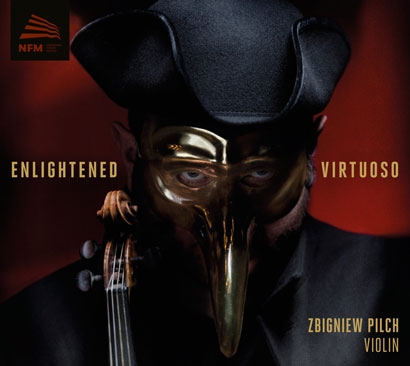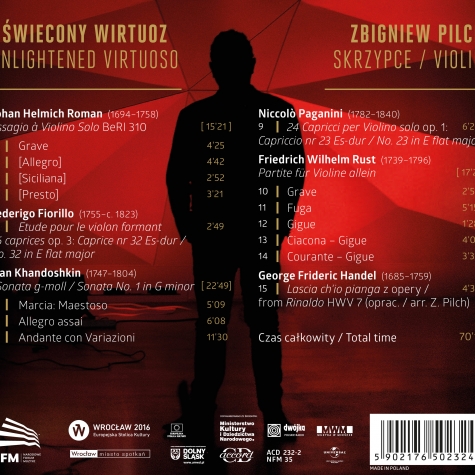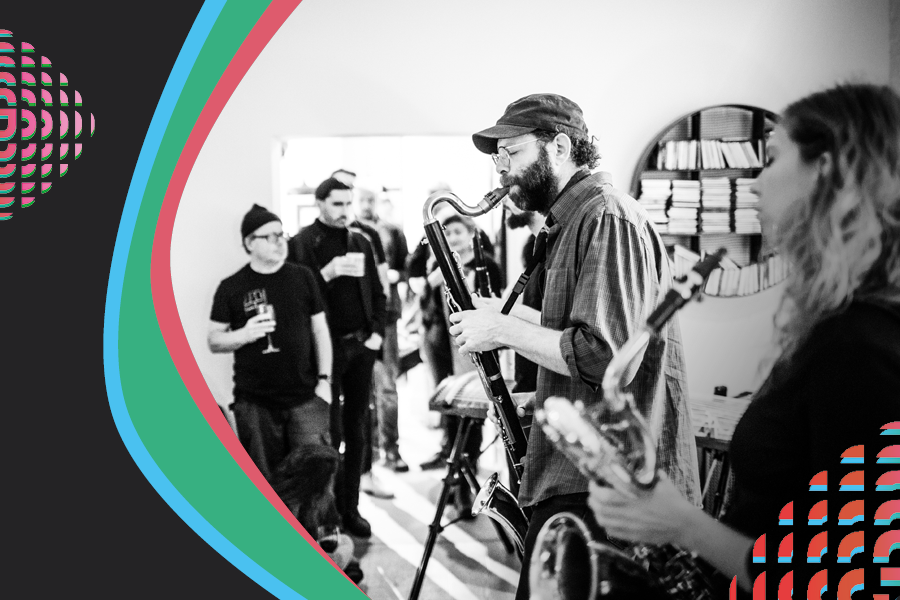Enlightened Virtuoso
Virtuosic violin works by composers active at the turn of Classicism and Romanticism in a daring performance, the first solo album of the acclaimed Baroque violinist Zbigniew Pilch. Enlightened Virtuoso is an attempt to show a performing artist who begins to emancipate himself in the second half of the 18th century – he breaks away from the stereotype of the musician-servant role, evolving towards an independent artist. This is when the idea of the violinist as a virtuoso soloist was born.
Year of release: 2017
Publishers: National Forum of Music, CD Accord
Performer: Zbigniew Pilch – violin
The 18th century saw thorough and radical social, cultural and political changes. In a nutshell, we can define them as an attempt to free scientific, social and artistic research from the centuries-old patronages, such as those bestowed by the church and aristocratic or royal courts. Notwithstanding any evaluations of this period, the social changes led to, inter alia, the Great French Revolution, which abolished the established social order for the first time in Europe’s history. Scientific research led to ground-breaking discoveries and inventions, such as the steam engine, and in consequence resulted in massive changes in human migration, industrial development and, what is perhaps the most typical feature of the 19th century, the speed of travelling thanks to the use of railways.
The 18th-century artists, such as Bach, Haydn, and Mozart, wearing liveries for the most part of that century, towards its end made efforts to emancipate themselves as artists (Beethoven was largely an embodiment of such emancipation). In the following century this trend led to another extreme – the universal cult of the artist as envoy of the gods.
Enlightened Virtuoso is an attempt to show the artist-performer beginning to get independent in the second half of the 18th century by breaking up with the stereotype of a musician as a servant and heading towards artistic independence, in this case of the violin virtuoso soloist.
The recording was made on a historical instrument with gut strings. The bow I use is a copy of a bow from the turn of the 18th century. The interpretation of pieces is largely based on historical records on performance principles, including the use of articulation and fingering, adequate for performance practice in the second half of the 18th century.
Zbigniew Pilch










